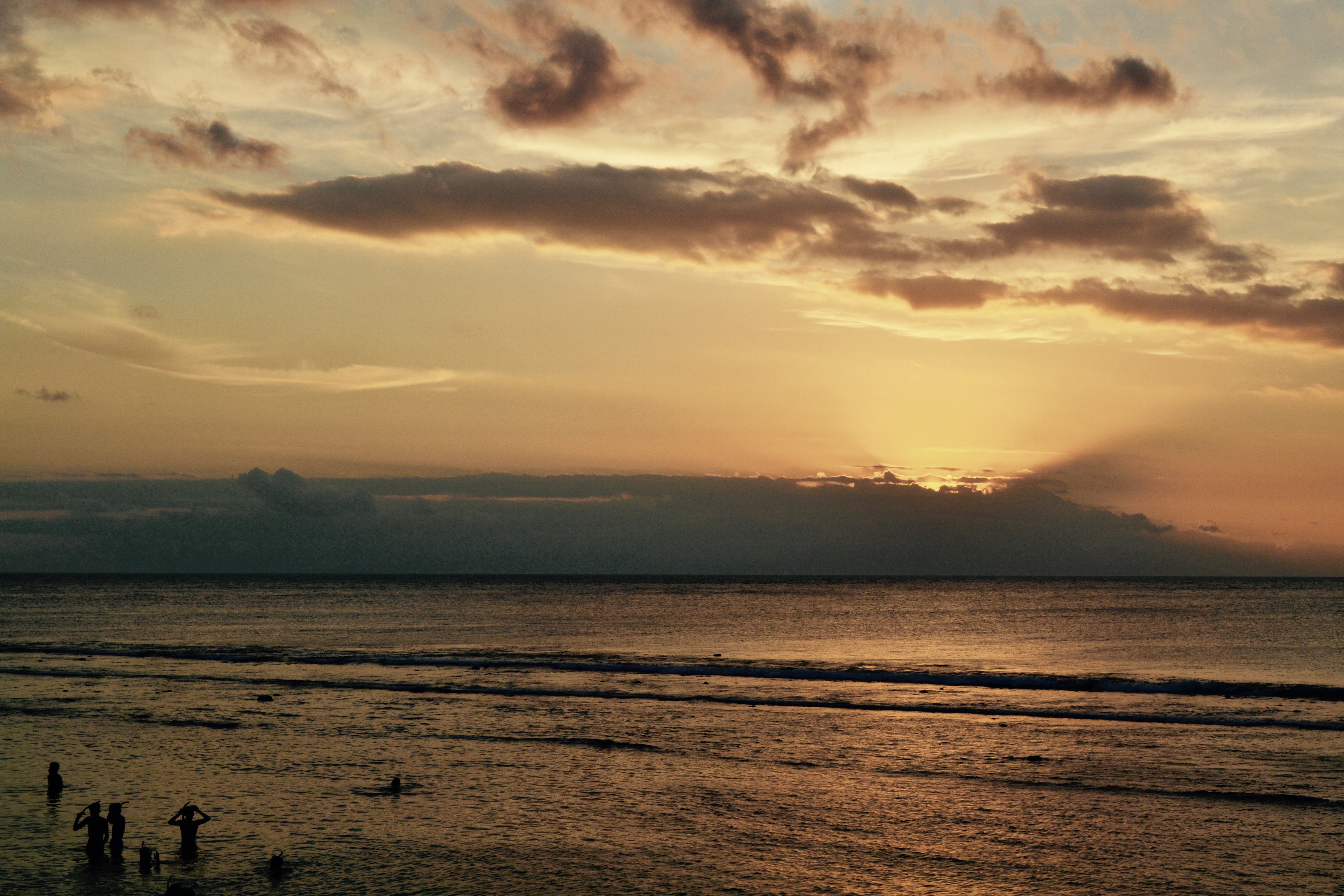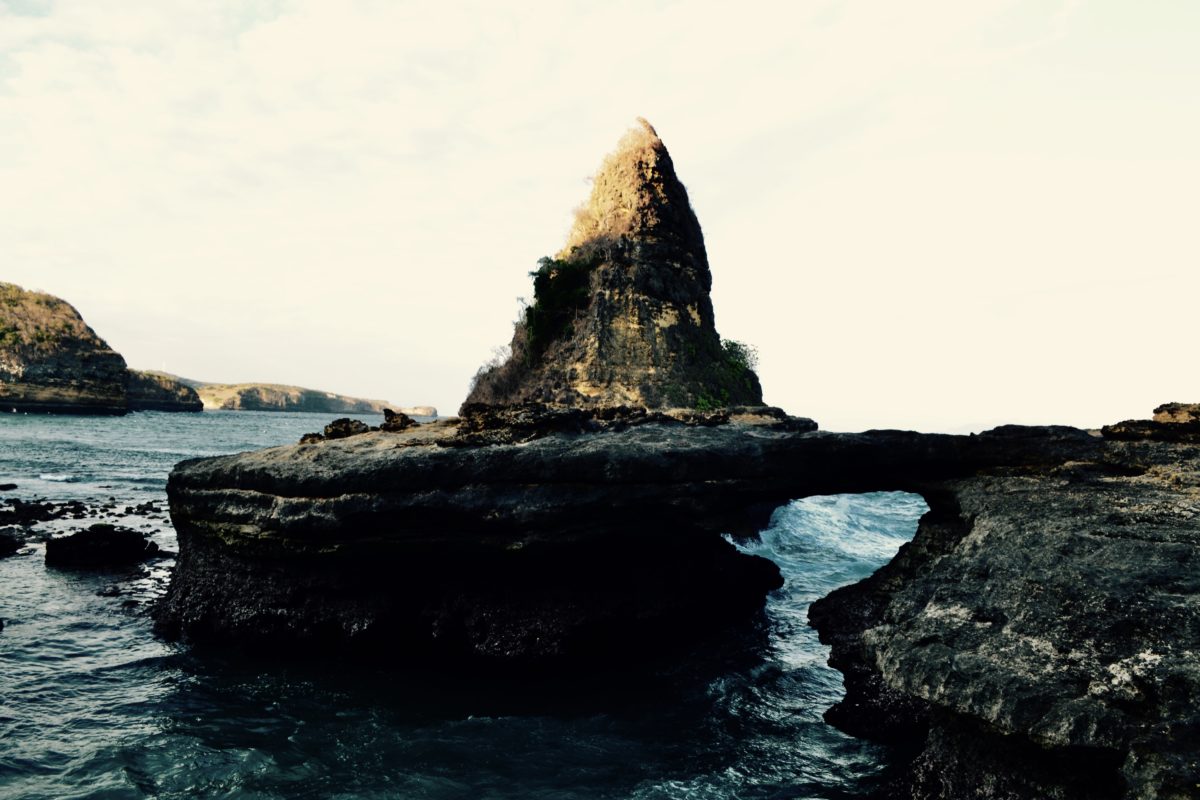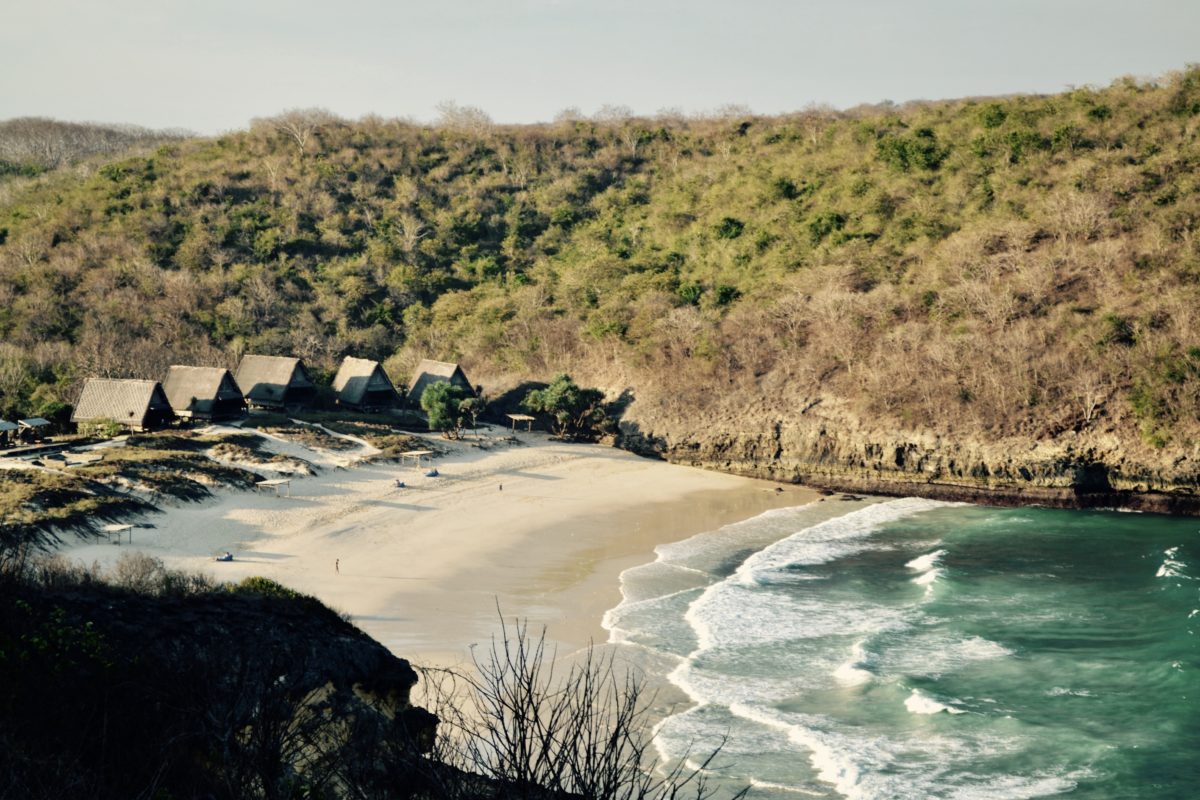
By: Madeline Weinfield
A two hour high speed boat ride, not for the faint of heart or stomach, has brought me from the Gili Islands to Lombok, the island that means spice in local language. It’s hard, upon arrival, to not immediately begin drawing comparisons from where we came. Lombok is drier than Bali but its flowers more fragrant. I’ve landed at Jeeva Klui, an eco friendly lodge that blends seamlessly into a stretch of pristine black volcanic sand. Jeeva Klui has sucked me in and I’ve missed a morning yoga class in favor of an outdoor bath with a cup of tea and my book. It’s not yet nine, but already it’s hot and dry, and the high tide has some surfers gliding over small waves in the distance.
Later in the morning I’ll have watermelon juice that glows a vibrant watery pink. The colors and tastes of Lombok are electric, almost as if they’ve been living a secret life all the while we’ve settled for imitations at home. The small, sweet bananas, the starburst-sweet jackfruit, the papaya—they are richer, creamer than I’ve had elsewhere.
The sand here is streaked with volcanic black. Gamelone music (an echo from Bali) haunts in the background. Bali’s allure, like its mountains piercing through the clouds on the horizon, looms in the distance. Today is Monday, although that hardly matters.


The sky of Lombok is all consuming, as if all the stars have been thrown up into the air and scattered, piercing the darkness as they land. The Milky Way stretches itself out in islands of clouds, seemingly mirroring the Indonesian archipelago. I strain my eyes to adjust to the upside-down sky of the southern hemisphere.
I move once, down the road two kilometers away to the smaller and more intimate Jeeva Santai—just 14 eco villas scattered on the sand. Traditional Lombok, Balinaese massages are offered and recommended at least once during your stay. We’re waiting on black rice pudding with coconut milk. Fishermen have been out all night with lights and nets, bringing in prawns, octopus, and whatever fish they can find.


Like the path of a reverse sun, I move east across the island of Lombok, seeking the arc of the fullness of the day, the life of the island that is larger and less touched, more remote, a little more left to the elements, than Bali. The eastern coast beckons with its raw landscape that the western edge has already begun to pave.
I land in the wind-swept cove of Jeeva Beloam Beach Camp where the wind cuts through the sky like the air following a bullet lodged from a gun. I’ve been waking to the sounds of squealing monkeys and pounding waves. It’s August and the end of the windy season, but its effects are still strong. Here you are at the mercy of the elements in their wild and untamed indifference to human life. Looking out onto the ocean, to the mountains of Nusa Teneggra’s other islands, it feels like the edge of the earth. And there is no place I would rather be.


This wildly untouched land, ripped raw against the winds of the cove, braced against the torrents of the late summer wind, where the sand pummels your face like thousands of angry rain drops begging you to go, or to stay, to see the summer through. This is the far eastern edge of Lombok, where few tourists go, where four wheel drives are required to trek over the unpaved, deeply pot-holed roads, where water is scarce, where drought is deeply real, where few people dwell, and where human kind and mother nature meet in one bizarre battle of beauty and bewilderment.

Set within a 136 acre nature preserve on the Timor Sea, Jeeva Beloam Surf Camp is nestled in a lonely cove of Tangsi Beach. It’s a wind-swept, edge of the earth camp of eleven berugas artfully styled after a traditional Sasak fishing camp. The icon of the beach is the Beloam Stone, a dramatic outcrop of stone that is pounded by the surf but at low tide is accessible by a short hike through a monkey-dense path. This is a land of extremes. You are far off the grid at Jeeva Beloam—the nearest ATM is an hour’s drive away, wifi works only in the reception tent, and there are strict hours for hot water, electricity, and meals. But look out at the sea, or up at the sky at night, or feel the power of the wind, and all else will feel superfluous. Here is a place to feel small.


The restaurant, Tenda, which is housed in a stilted canvas tent, serves the fish the local fishermen will bring in each morning and poultry and eggs from farmers who come by daily. At night I’ll sit on the beach and watch as the sky turns from evening to dusk to darkness, as the fishermen continue to sail undaunted by the wind that extinguishes the bonfire before me.

Here I’ll endured one of the greatest moments of self-inflicted pain: a traditional Lombok massage with forceable movement of ligaments and veins. More than once I’ll involuntarily shout out in pain. Afterward, I’ll let ginger-root “cut” shallow lines across my back ribcage, a traditional remedy to release whatever ails me—in my case a lingering case of walking pneumonia (Lombok’s answer to Chinese massage’s gua sha).
When I leave in the early morning to make the long drive the airport on the other end of the island, over the potholed roads, to the other land that is Lombok with water, I watch as the tree, dry and leafless, point in the direction of the sea, as if longing for a sip of the ocean. Where once the roads may have been paved, they lay shredded underfoot with dull glimmers of specks of what once was pavement. Down the road is Pink Sand Beach, where crushed coral (and poetic license) makes the sand glow a rosy hue at a certain hour of the day. Lobster and pearl farms are a bike away. But there are other roads to travel and other coves to see, other islands to visit, other winds to be moved by.
About the author: Madeline Weinfield is a writer based in New York City. Follow her adventures on Instagram at @madolionw.


